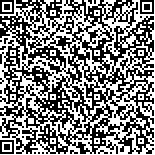| 引用本文: | 郑诚,留钰秀,袁莉霞,吴瑶,王杰,傅杨群,彭昕.覆盆子及其近缘混淆品的PCR-RFLP鉴别研究[J].中国现代应用药学,2022,39(11):1458-1463. |
| ZHENG Cheng,LIU Yuxiu,YUAN Lixia,WU Yao,WANG Jie,FU Yangqun,PENG Xin.Identification of Rubus Chingii Hu and Its Related Confounders by PCR-RFLP[J].Chin J Mod Appl Pharm(中国现代应用药学),2022,39(11):1458-1463. |
|
| 本文已被:浏览 1537次 下载 811次 |

码上扫一扫! |
|
|
| 覆盆子及其近缘混淆品的PCR-RFLP鉴别研究 |
|
郑诚1, 留钰秀2, 袁莉霞2, 吴瑶2, 王杰1, 傅杨群3, 彭昕1
|
|
1.宁波市中医院, 浙江 宁波 315016;2.浙江药科职业大学, 浙江 宁波 315100;3.浙江大成药业有限公司, 浙江 金华 322300
|
|
| 摘要: |
| 目的 建立一种覆盆子特异性的分子鉴别方法。方法 通过对覆盆子及其混淆品的ITS序列进行测序分析,根据差异位点设计限制性内切酶,采用聚合酶链反应-限制性片段长度多态性方法(polymerase chain reaction restriction fragment length polymorphism,PCR-RFLP)进行鉴别,建立并优化PCR鉴别方法,并对其稳定性和适用性进行考察与验证。结果 设计的引物可实现对覆盆子及其混淆品序列的扩增,扩增产物为800 bp大小的条带,通过对限制性内切酶MboI进行酶切后的片段长度进行分析,仅覆盆子的序列可被酶切形成2个片段,而混淆品的序列不能被切开,从而特异性鉴别是否为覆盆子。结论 本实验建立的PCR-RFLP方法可用于鉴别覆盆子。 |
| 关键词: 覆盆子 混淆品 聚合酶链反应-限制性片段长度多态性 分子鉴定 |
| DOI:10.13748/j.cnki.issn1007-7693.2022.11.010 |
| 分类号:R282.5 |
| 基金项目:磐安县重大科技项目(201901) |
|
| Identification of Rubus Chingii Hu and Its Related Confounders by PCR-RFLP |
|
ZHENG Cheng1, LIU Yuxiu2, YUAN Lixia2, WU Yao2, WANG Jie1, FU Yangqun3, PENG Xin1
|
|
1.Ningbo Traditional Chinese Medicine Hospital, Ningbo 315016, China;2.Zhejiang Pharmaceutical Vocational University, Ningbo 315100, China;3.Zhejiang Dacheng Pharmaceutical Co., Ltd., Jinhua 322300, China
|
| Abstract: |
| OBJECTIVE To establish a specific molecular identification method for Rubus chingii Hu. METHODS The ITS sequences of Rubus chingii Hu and its adulterants were sequenced and analyzed. A restriction enzyme was screened according to the variation sites of sequence analysis results. Subsequently, polymerase chain reaction restriction fragment length polymorphism PCR-RFLP method was established and optimized to distinguish Rubus chingii Hu and its adulterants, the stability and applicability of the method was investigated and verified. RESULTS The designed primers could amplify the sequences of Rubus chingii Hu and its adulterants to produce a 800 bp specific fragment. MboI restriction endonuclease could only digest the amplified fragment of Rubus chingii Hu into two smaller pieces and could not digest the amplified fragment of the adulterants. In this way, Rubus chingii Hu was identified specifically. CONCLUSION The PCR-RFLP method established in this study can be used to identify the authenticity of Rubus(PCR-RELP) chingii Hu. |
| Key words: Rubus chingii Hu adulterants polymerase chain reaction restriction fragment length polymorphism(PCR-RELP) molecular identification |
